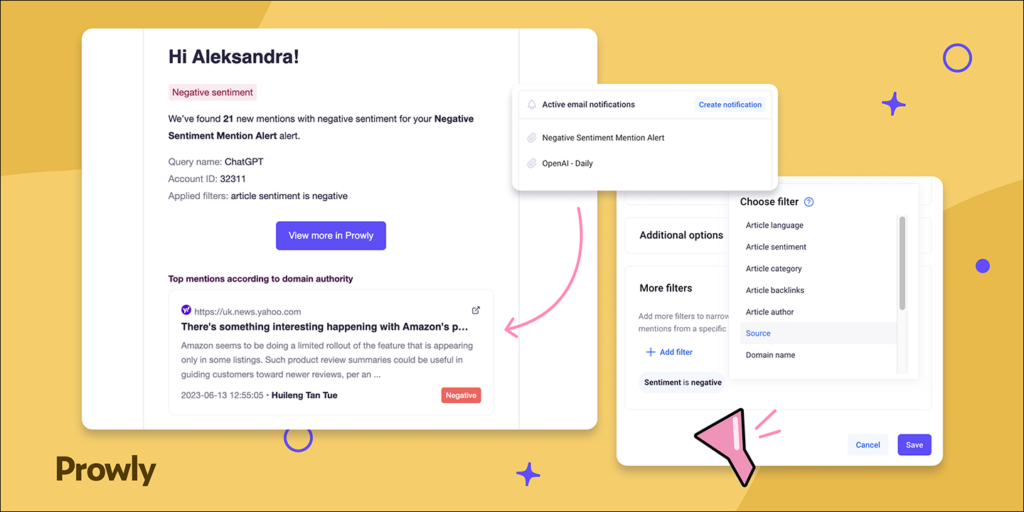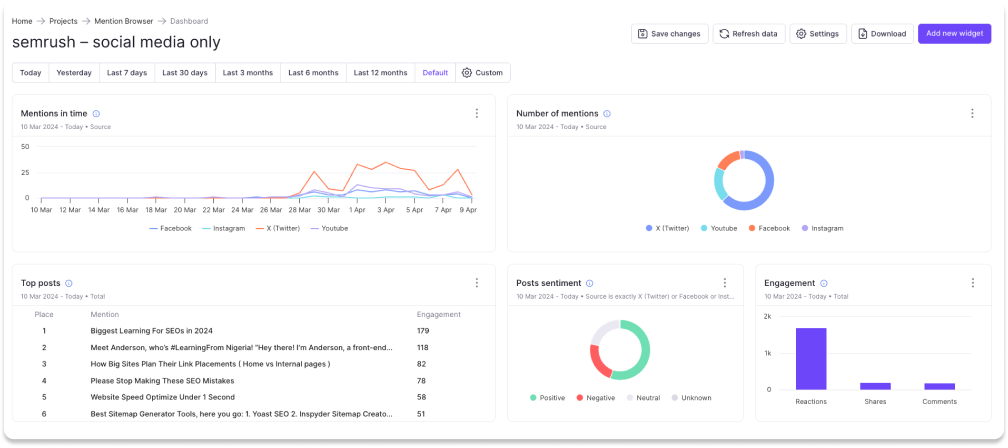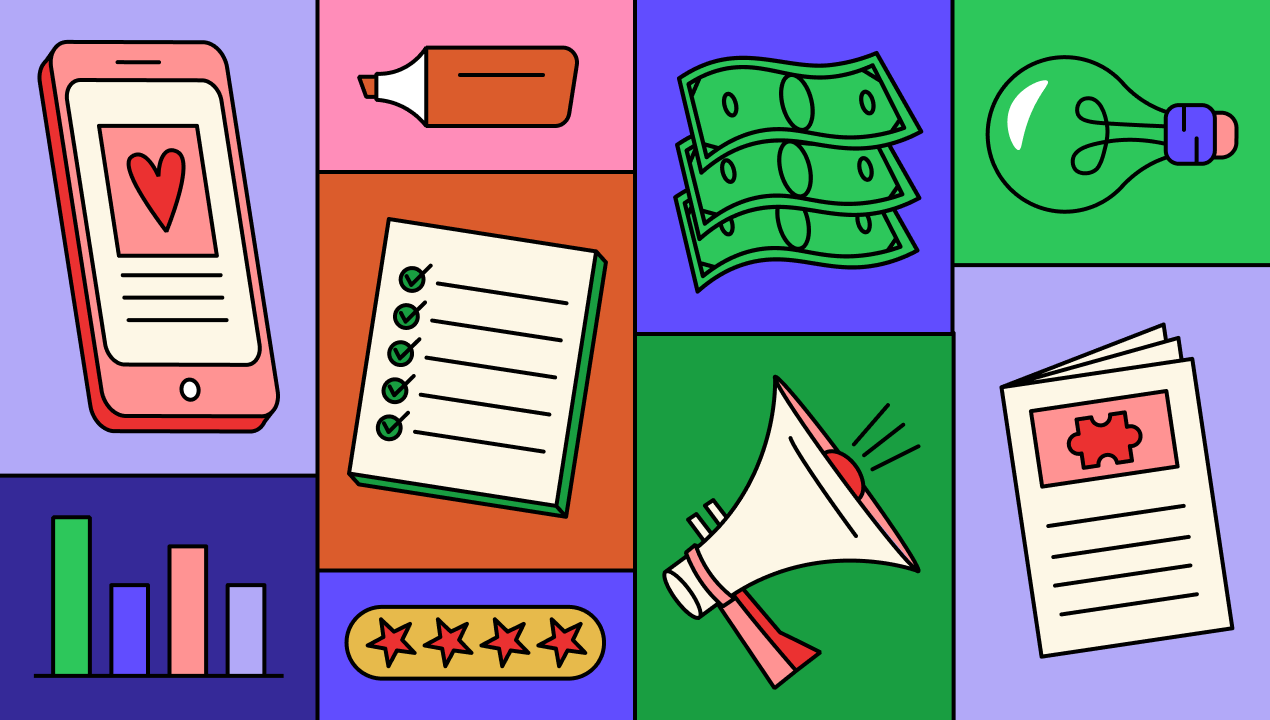Organic marketing strategies like SEO are crucial for long-term success. But what if you need to generate leads, boost brand awareness, or drive sales fast? That's where paid media campaigns come in.
This powerful PR format allows you to place targeted advertisements across various online platforms. Thus you can put your brand directly in front of your ideal customers exactly where they're most receptive. This article dives deep into the world of paid media campaigns, exploring everything you need to know to leverage this strategy for explosive business growth. Examples included.
Below you’ll find:
- What is paid media?
- Why does paid media matter to PR?
- Monitoring and optimization
- Steps to build a successful paid media campaign
- 5 real-life paid media examples of big PR campaigns
- FAQ
What is paid media? Definition
Paid media is any form of advertising that you directly invest money in.
This can encompass traditional channels, like television commercials and print ads, or it can take place entirely through online platforms, like social media and search engines.
What is the PESO model
The PESO model is a framework created by Gini Dietrich used in marketing and public relations to categorize different communication channels into four areas: Shared, Paid, Earned, and Owned Media. It helps organizations develop a comprehensive marketing strategy by understanding how each media type works in tandem.
Paid, Earned, Shared, and Owned Media – the differences
- Paid Media: Refers to any advertising space you directly invest in, like social media ads, sponsored content, or display advertising.
- Earned Media: Publicity you generate organically. This means positive reviews, media mentions, or influencer marketing (without direct payment).
- Shared Media: This involves the content and information shared by users across various platforms. It includes user-generated content, social media interactions, and any form of content that is shared and spread by the audience, often blurring the lines between paid, earned, and owned media.
- Owned Media: These are the channels you control directly. It includes your website, blog, and social media profiles.
Paid, Earned, Shared, and Owned Media differ mainly via the money you put into them and the channels you focus on. But there are more nuances to consider. That's why we compared them in the article Maximizing PR Strategy with Paid, Owned, and Earned Media to show you how to step up your PR game with each media type.
Want to get to know more about earned media only? Check out this article.
Why does paid media matter to PR?
The market is crowded, so sometimes it may be hard to reach your target audience organically. This is where paid media steps in as a game-changer. It may:
- Boosts Visibility and Awareness. Paid media channels may propel your PR efforts forward by amplifying your message and reaching a wider audience. Strategic paid media management can ensure your brand story gets seen by the right people at the right time.
- Amplifies Earned Media. Do you want a spotlight on your earned media? Imagine an influencer posting a glowing review of your product. Paid promotion can ensure this positive coverage reaches a much larger audience, maximizing its impact.
- Targets Specific Audiences. With paid media services, you can focus on a narrow targeting strategy and thus reach your audience. You can tailor your ads to reach demographics with specific interests, behaviors, and online habits. This ensures your message resonates.
- Drives Measurable Results. Paid media campaigns are data-driven. This means you can easily track all your KPIs, like reach, engagement, or conversions. Such information can be used to refine your PR strategy and measure the success of your campaigns.
Steps to build a successful paid media campaign
1️⃣ Define campaign goals & align with PR goals
It all starts with what you want to achieve. Below you can find examples of paid media strategy goals for PR pros:
- Increase Brand Awareness – Enhance public perception and visibility
- Lead Generation – Attract new clients or partners
- Sales Conversion – Support PR-driven sales initiatives
- Engagement – Foster deeper connections with your audience
- Drive KPIs – Ensure paid media objectives bolster overall PR strategies and key performance indicators
2️⃣ Data collection & segmentation
Verify your gathered data, segment it, and evaluate messages.
- Use CRM data, social media insights, and market research to understand your audience. It may provide you with a new PR angle and allow you to see the core of your target actions.
- Divide your audience into segments. You can do this based on criteria such as age, location, interests, and buying behaviors. Allowing you to see some trends you can adapt to.
3️⃣ Channel selection: platform assessment
- Facebook – good to reach a wide demographic and offers detailed targeting options.
- LinkedIn – a B2B-focused platform where you will reach a professional audience.
- X (Twitter) – dedicated to real-time engagement and covers trending topics.
- YouTube – may get you high engagement through video content.
- Google Ads (PPC) – aimed at high-intent search traffic and competitive bidding.
- Display Networks – will give you a broad reach and retargeting capabilities.
4️⃣ Budget allocation
Split your budget according to the platforms that reach your target audience and align with your goals. The best paid media campaigns do not cost much, but are aimed at the right people.
5️⃣ Content creation: ad formats
Once you gather all the required information, it's time to act, ie. to choose formats and create content. You can choose:
- Static Ads – eye-catching banners and images with strong PR messaging.
- Video Ads – short-form content that tells your brand story in seconds.
- Interactive Ads – polls, quizzes, and surveys to engage your audience.
- Sponsored Content – articles and posts that highlight your PR stories and achievements.
6️⃣ Content creation: messaging and visuals
What is your message? Establish what you want to share with your target and put it in words and visuals.
- Craft headlines and copy that resonate with your and your audience’s values and interests.
- Use high-quality visuals. Focus on the details. All visuals should align with your brand’s image, follow your branding, and support your PR objectives.
7️⃣ Campaign execution
It’s time for action, so decide on:
- Ad Placement – Select placements that maximize your PR impact and audience reach.
- Scheduling – Choose optimal times for ad placements based on audience behavior and your PR needs.
- Launch – Implement a phased launch to test audience reactions and refine your messaging.
Monitoring and optimization
Once it’s all done, you should keep your finger on the pulse. And adjust your paid media campaign as you go.
💡 With Prowly, you can track your campaign success through the news, blogs, discussion forums, and social media. Moreover, you can set alerts for new mentions, negative sentiments, unusual spikes, or mentions in top-tier publications.

You can also track mentions in traditional media, including print, radio, TV, and podcasts. This ensures you never miss a mention, whether it's a paid product placement or a collaboration where your client's product is mentioned in a TV show, radio interview, or on platforms like Spotify.
It’s easier to optimize your actions if you know what is going on.
P.S. In this article, you can dive deeper into the topic of print media in the digital PR world—with practical how-to tips and examples.
Real-Time analytics
It’s important to know what is happening now. So monitor impressions, clicks, CTR, and conversions to assess your PR campaign effectiveness.
A/B testing
Test what works best. Set different ad variations to find the most compelling PR messages for your target audience.
Adjustments
Make necessary improvements and optimize ads based on performance data to enhance PR outcomes.
Evaluation and reporting
Regularly review and report on metrics to assess PR impact and inform future strategies. You can collect important data with Prowly and create a comprehensive report with all the details.

When using Prowly, you can monitor the right media channels, and add key mentions to your PR reports with just a few clicks. No need to copy-paste data between tools and taking screenshots of the mention.

5 real life paid media examples of big PR campaigns
#1 Nike: Dream Crazy Campaign
Overview
Nike’s “Dream Crazy” campaign, featuring Colin Kaepernick, focused on inspiring athletes. It took a bold stance, urging athletes to pursue their wildest dreams and fight for what they believe in. The campaign included TV spots, online ads, and social media promotions.
Key Elements
👉 Strong, emotional storytelling
👉 High-profile athlete endorsements
👉 Controversial yet impactful messaging
Results:
- Significant increase in brand engagement
- Spike in online sales
- Global conversation about social justice
💡 PR lesson
People connect with genuine stories and relatable voices. Your PR messages should focus on authenticity and storytelling. It will create a deeper connection with your audience. Let your brand values shine through in a way that feels true and resonates with your target demographic. This campaign ranks highly among other examples of paid media campaigns that resonate.
#2 Burger King: Whopper Detour
Overview
Everybody knows the “beef” between McDonalds and Burger King. One of the most memorable actions in it was Burger King’s “Whopper Detour” campaign. It used geofencing technology to offer customers a 1-cent Whopper if they ordered through the app within 600 feet of a McDonald's.
Key Elements
👉 Innovative use of technology
👉 Competitive and playful strategy
👉 Strong call-to-action
Results
- Increased app downloads by 1.5 million
- High engagement and sales spike
- Extensive media coverage
💡 PR lesson
Embrace technology. The campaign showcased the power of location-based marketing and mobile app integration. By targeting users physically close to McDonald's locations, Burger King ensured their message reached their most relevant audience. Such an innovative use of technology grabbed attention and demonstrated the brand's commitment to digital engagement.
#3 Heineken: Worlds Apart
Overview
Differing opinions can sometimes create a heated atmosphere. Heineken's "Worlds Apart" campaign brought together people with opposing views and had them engage in a constructive conversation over a beer. The campaign delivered a powerful video ad and social media promotion.
Key Elements
👉 Addressed social division
👉 Emphasized dialogue and understanding
👉 Engaging video content
Results
- Over 13 million views on YouTube
- Positive global media coverage
- Strengthened brand association with inclusivity
💡 PR lesson
“Worlds Apart" demonstrates the power of PR to go beyond traditional media outreach. The campaign used social media and influencer marketing to spread its message. This multi-channel approach ensured the message reached a wider audience and fostered a sense of community around the campaign's theme. Benefit from the full-funnel of paid media campaigns and split your efforts across various channels.
#4 IKEA: Real Life Series
Overview
IKEA knows the power of simple ideas. The “Real Life Series” recreated famous living rooms from popular TV shows using IKEA furniture. The campaign was promoted through paid media channels like social media, online ads, and in-store displays.
Key Elements
👉 Creative and relatable concept
👉 Cross-media promotion
👉 Tapping into pop culture
Results
- High social media engagement
- Increased foot traffic to stores
- Boost in furniture sales
💡 PR lesson
The best social media campaigns usually come from touching on a common topic (like a TV series). Choose an easy-to-identify theme and deliver your message through it.
#5 Apple: Shot on iPhone
Overview
Apple turned everyday people into mobile photography masters with their "Shot on iPhone" campaign. Eye-catching billboards and online ads displayed stunning photographs captured entirely on iPhone cameras.
Key Elements
👉 User-generated content
👉 High-quality visuals
👉 Global reach
Results
- Enhanced brand image
- Increased user engagement
- Boost in iPhone sales
💡PR lesson
Integrate UGC into your PR strategy. Even the best paid social media campaign benefits from it. Encourage your target audience to share their experiences with your product or service. It builds trust and authenticity. Also utilizes the power of your customer base to spread brand awareness.
FAQ: Paid media campaigns
So you’ve already learned about paid promotion and the best examples of paid media campaigns. Let’s cover some of the most commonly asked questions.
💬 How do I plan a paid media campaign?
1️⃣ Crafting a winning paid media campaign starts with defining your goals. Do you want brand awareness, website traffic, or increased sales?
2️⃣ Once you know your target and objectives, research the best platforms to achieve them, be it social media ads or search engine marketing.
3️⃣ Finally, set a budget and track your results to optimize your campaign for maximum impact.
💬 What is paid vs earned media?
- Paid media is advertising you pay for. It means paid social media campaigns, sponsored content, or TV commercials. You have control of the message placement. But typically it feels more promotional.
- Earned media is free publicity you "earn" through positive coverage. Like in news articles, influencer mentions, or positive reviews. It's more credible as it comes from a third-party source.
💬 What is an example of paid media?
Paid media covers content you pay to distribute on channels like social media (ads on Facebook, Instagram, X or LinkedIn), Search Engines (Google Ads), or TV.
To sum up paid media promotion
What are paid media campaigns? Hopefully we gave you the answer to this.
We’ve covered the essentials and backed them with real-life examples. Giving you a ready-to-use kit to start your own campaigns and benefit from the best channels to reach your audience.
Get your paid media coverage under control with Prowly. Create a compelling story, choose placements, and monitor performance.
